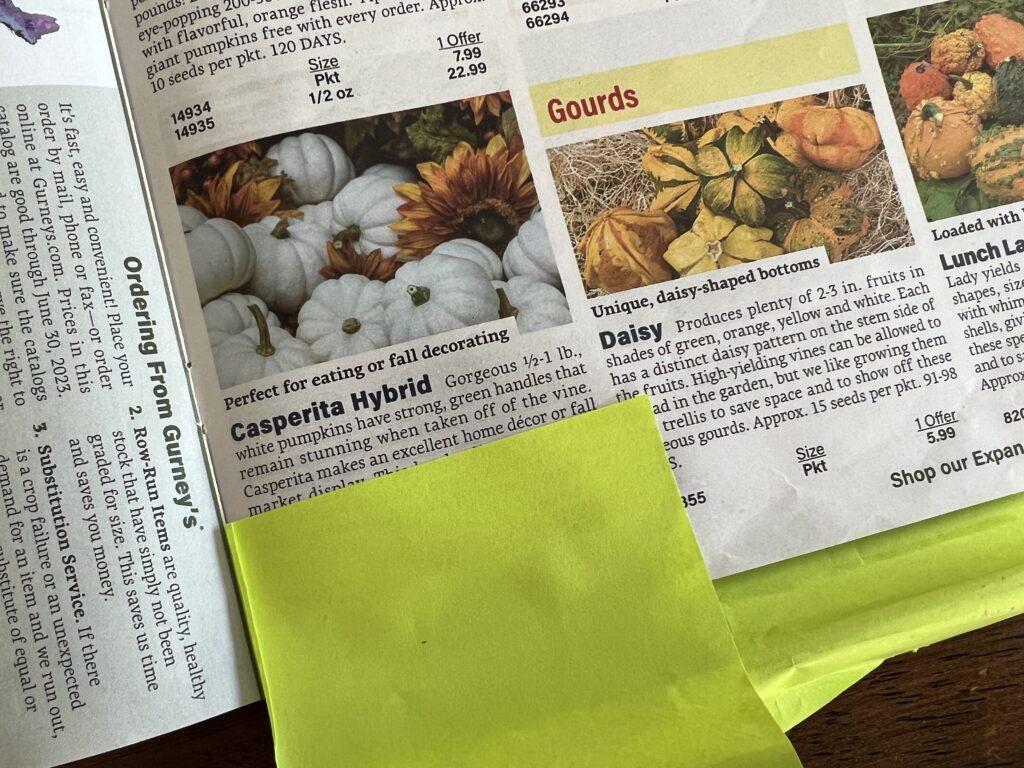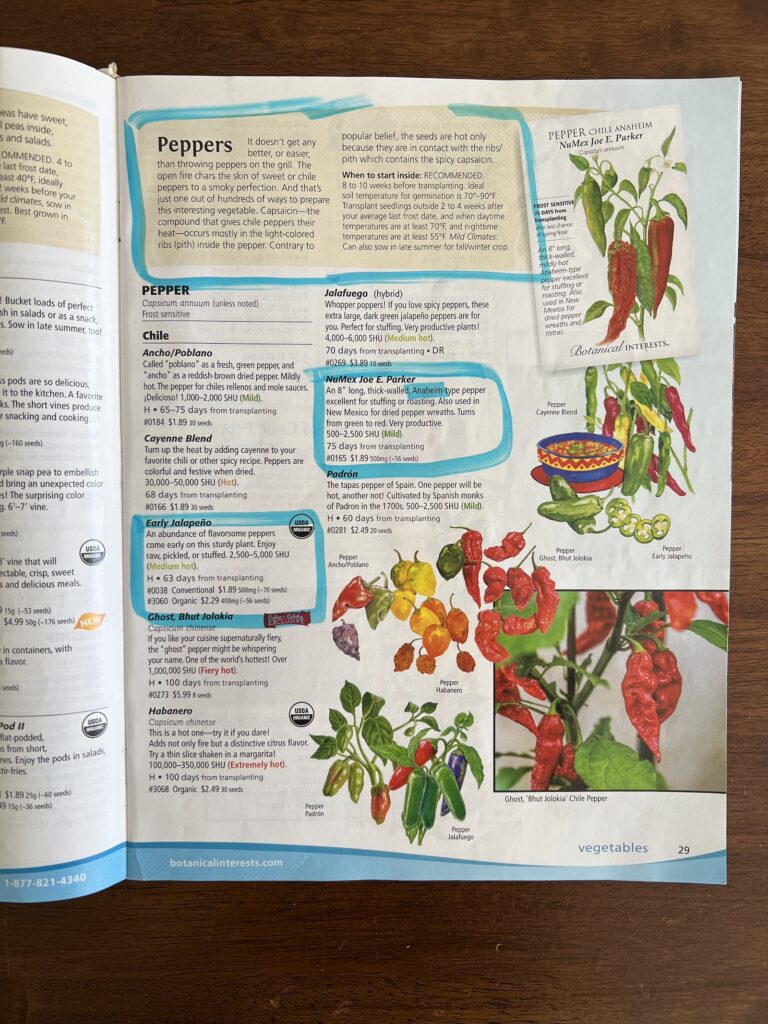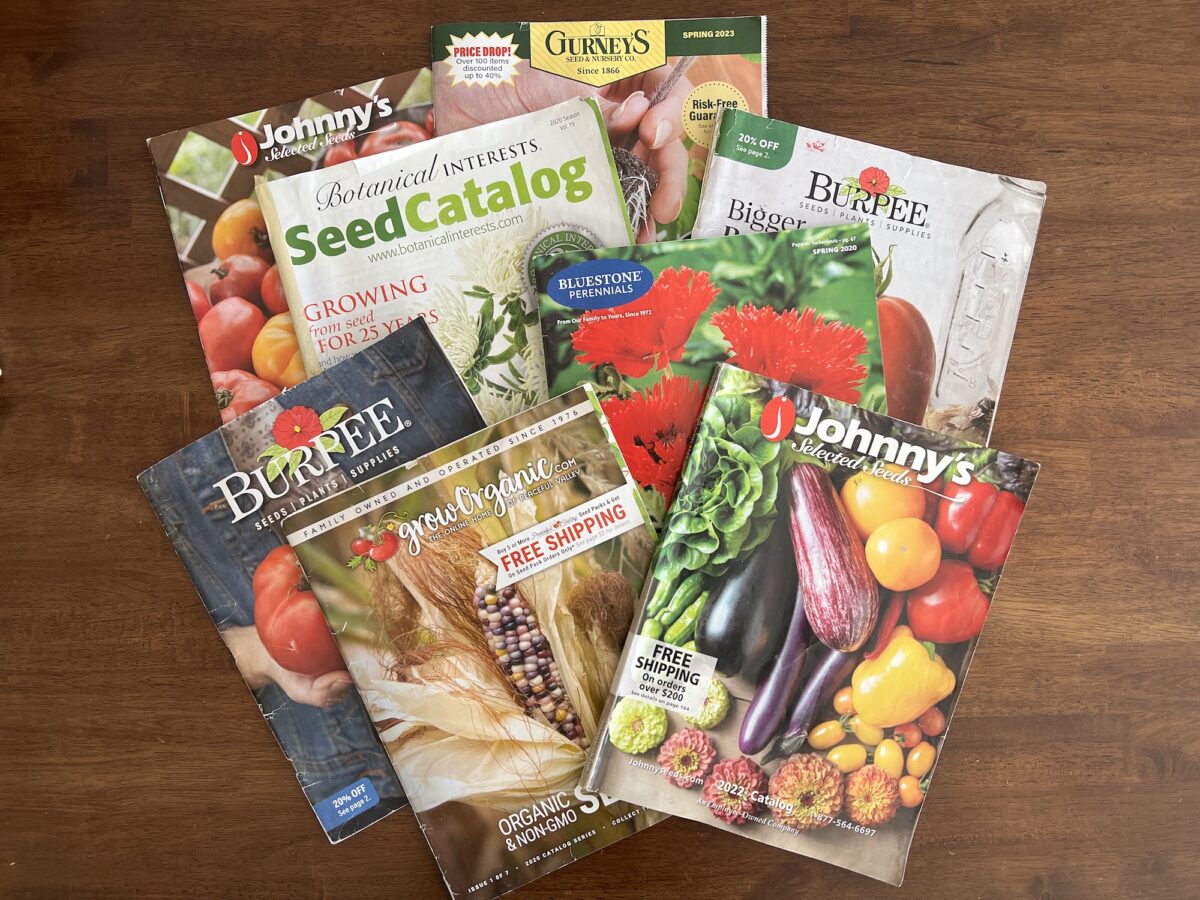As I child I loved to look through seed catalogs. I would leaf through them and imagine what I would put in my garden. Sometimes I would even be allowed to cut out the pictures and I could glue them together to make a garden picture. Now, it is my own two daughters who lunge for the seed catalogs when they arrive. They flip through oohing and aahing over all of the different fruits and vegetables, dreaming about the what ifs….

“Mom, can we have a lingonberry, it’s in our zone. Then we could make our own lingonberry jam”.
“Can we please have the red yard long beans. They look so cool!”
“Ooh, white pumpkins! Wouldn’t those be fun to have?”
Seed catalogs are a great tool to engage students in planning the garden while also gaining practical experience in reading, writing, and math. I always save my seed catalogues each year so that students can use them, but I’ve also had success calling up the some of the bigger seed catalogs and having them send me a classroom set. Students love looking through the catalogs just as much as my daughters and I do. You can harness their excitement over the plants to practice academic skills while aIso planning your garden. Here are some possible ways you can use seed catalogs in the classroom.
Descriptive Writing – Read the descriptions for various plants. Identify the adjectives used to describe the plant. Which adjectives capture your attention more than others. Have students write their own description for a plant to help market the plant as a choice in your garden.

Riddles – Students can choose a variety and then write a riddle that describes the variety. Have other students try to guess what it was.
Compare and Contrast – Have students select two or three varieties of a plant. Read through the description of each one. How are they the same and different. Create a Venn Diagram to capture the attributes of the selected varieties.
Persuasive writing – Choose a plant and write a persuasive essay on why that plant should be chosen for the garden.
Money – Have students pick out plants for a dream garden. Using the prices listed in the catalog, calculate how much the garden would cost. Have students calculate sales tax to get some practice with percents and decimals. Build a budget for the garden.

Measurement – Using the width and height listed for each plant, create a life size drawing of the plant. Put all varieties of a certain species in order from smallest to tallest.
These are just a few of the possibilities to utilize seed catalogs as a teaching tool. The next time you need a way to teach or reinforce a new concept, pull out your seed catalogs. Perhaps they’ll provide some curriculum inspiration in addition to garden inspiration!

